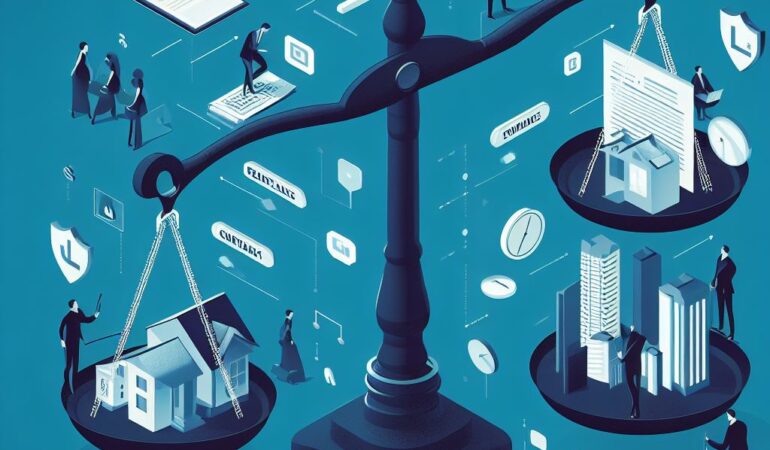Thinking about investing in multifamily apartment properties? Well, you better buckle up because the legal aspects can be quite the rollercoaster. From lease agreements to eviction procedures, there’s a lot you need to know to navigate this complex landscape.
In this article, we’ll dive into the key legal considerations you’ll face as a multifamily apartment investor. So, grab a pen and paper because you’re about to get schooled in the dos and don’ts of this lucrative investment opportunity.
Let’s get started!
Key Takeaways
- Lease agreements and negotiations are essential in multifamily apartment investing, and it is important to review and negotiate the terms carefully, paying attention to rent amount, lease duration, and additional fees.
- Compliance with zoning regulations is crucial to ensure the property meets specific land use requirements, adheres to setbacks and building height restrictions, and meets parking and landscaping requirements to avoid fines, legal action, and closure of the property.
- Understanding tenant rights and responsibilities is important for landlords to ensure a habitable living space, privacy, and protection against discrimination, while also enforcing responsibilities outlined in the lease agreement and ensuring timely rent payment and maintenance of the unit.
- Maintaining property and safety standards is crucial to protect tenants and prevent legal liabilities. Regular inspections, prompt repairs, implementation of safety measures, and maintaining well-lit common areas and clear emergency exit routes are necessary for maintaining a safe and habitable environment.
Lease Agreements
When entering into a multifamily apartment investment, it’s crucial for you to carefully review and negotiate lease agreements with tenants. Lease agreements form the foundation of the landlord-tenant relationship and have significant legal implications. By thoroughly examining these agreements, you can protect your investment and ensure a smooth operation of your multifamily property.
First and foremost, it’s important to review the terms and conditions outlined in the lease agreement. Pay close attention to the rent amount, lease duration, and any additional fees or charges. Analyze whether these terms align with your investment goals and expectations. Consider the current market conditions and rental rates in the area to determine if the proposed rent is reasonable.
Furthermore, you should carefully scrutinize the clauses related to maintenance and repairs. Clarify the responsibilities of both parties regarding property upkeep, repairs, and maintenance costs. This will help avoid any misunderstandings or disputes in the future.
In addition, it’s essential to understand the provisions regarding lease termination and eviction. Familiarize yourself with the notice periods required for both you and the tenant. Ensure that the lease agreement complies with local landlord-tenant laws and regulations to protect your rights as a landlord.
Lastly, negotiate any necessary modifications or additions to the lease agreement. Discuss any specific requirements or preferences you may have, such as pet policies, parking arrangements, or noise regulations. By actively participating in the negotiation process, you can tailor the lease agreement to meet your specific needs and mitigate potential risks.
Zoning Regulations
To ensure compliance with zoning regulations, you must adhere to the specific land use requirements for your multifamily apartment investment. Zoning regulations are put in place by local governments to control the use, density, and design of properties within a specific area. Failure to comply with these regulations can result in fines, legal action, and even the forced closure of your investment property.
Here are three key aspects of zoning regulations that you need to consider:
- Zoning classification: Each property is assigned a specific zoning classification, such as residential, commercial, or mixed-use. You must ensure that your multifamily apartment investment aligns with the designated zoning classification for the area.
- Setbacks and building height restrictions: Zoning regulations often dictate the distance your building must be set back from property lines and the maximum height allowed. It’s crucial to understand and adhere to these requirements to avoid potential violations.
- Parking and landscaping requirements: Zoning regulations may also specify the number of parking spaces required for your multifamily apartment building and the amount of green space or landscaping that must be provided. Failure to meet these requirements can result in penalties and non-compliance issues.
Tenant Rights and Responsibilities
As a multifamily apartment investor, you have a crucial role in ensuring tenant rights and responsibilities are upheld. It is important to understand the legal framework surrounding tenant rights and responsibilities to avoid potential legal issues and maintain a positive landlord-tenant relationship.
Tenant rights encompass various aspects such as the right to a habitable living space, privacy, and protection against discriminatory practices. On the other hand, tenants also have responsibilities, including paying rent on time, keeping the rental unit clean and well-maintained, and respecting the rights of other tenants.
To provide a clearer understanding, the following table outlines some key tenant rights and responsibilities:
| Tenant Rights | Tenant Responsibilities |
|---|---|
| Right to a habitable living space | Paying rent on time |
| Privacy | Keeping the unit clean and well-maintained |
| Protection against discrimination | Respecting the rights of other tenants |
| Right to repairs and maintenance | Following the terms of the lease agreement |
Property Maintenance and Safety Standards
Ensure that you consistently meet and exceed the property maintenance and safety standards for your multifamily apartment building. Proper property maintenance and adherence to safety standards are essential for the well-being of your tenants, as well as to protect yourself from potential legal liabilities. Here are three key aspects to consider:
- Regular inspections: Conduct routine inspections of your property to identify any maintenance or safety issues. This includes checking for structural damage, plumbing and electrical problems, and potential hazards such as slippery surfaces or faulty fire alarms. Promptly address any issues that arise to ensure the safety and comfort of your tenants.
- Timely repairs: Promptly address any maintenance or repair requests from your tenants. This not only demonstrates your commitment to providing a safe and well-maintained living environment, but it also helps prevent minor issues from escalating into larger, more costly problems. Regularly schedule maintenance tasks such as HVAC system checks, pest control, and landscaping to ensure the overall upkeep of the property.
- Safety measures: Implement and maintain safety measures to protect your tenants. This includes ensuring that all common areas are well-lit and free from obstacles, installing and maintaining fire extinguishers and smoke detectors, and providing clear emergency exit routes. Regularly educate your tenants on safety protocols and establish a system for reporting and addressing any safety concerns that may arise.
Eviction Procedures
Maintain compliance with eviction procedures throughout the tenancy to protect your rights as a multifamily apartment owner. Eviction is a legal process that allows you to remove tenants who’ve violated the terms of their lease agreement. It’s crucial to follow the correct procedures to avoid any potential legal issues and ensure a smooth eviction process.
Firstly, review your lease agreement to understand the grounds for eviction and the required notice period. Common reasons for eviction include non-payment of rent, violation of lease terms, and illegal activities on the premises. Make sure to document any instances of lease violations or non-payment of rent to support your case.
Next, provide the tenant with the appropriate written notice, as required by state and local laws. The notice should clearly state the reason for eviction and the date by which the tenant must vacate the premises. Keep copies of all communication and ensure that the notice is delivered in a legally acceptable manner, such as through certified mail or by a process server.
If the tenant fails to vacate the premises after the notice period, you may need to file an eviction lawsuit in court. Consult with an attorney to ensure that you follow the correct legal procedures and provide all necessary documentation to support your case. It’s essential to act within the confines of the law and avoid any potential liability for wrongful eviction.
Frequently Asked Questions
What Are the Tax Implications of Investing in Multifamily Apartment Buildings?
Investing in multifamily apartment buildings has tax implications you should be aware of. These include potential deductions, capital gains taxes, and potential tax benefits like depreciation. It’s crucial to understand these aspects before making any investment decisions.
How Do I Determine the Rental Rates for My Multifamily Property?
To determine rental rates for your multifamily property, research the local market, analyze comparable properties, and consider factors such as location, amenities, and demand. Consult with a real estate professional for guidance.
What Insurance Coverage Do I Need as a Multifamily Apartment Investor?
As a multifamily apartment investor, you need insurance coverage that protects your property and mitigates potential risks. This includes property insurance, liability insurance, and possibly additional coverage such as flood or earthquake insurance.
What Are the Financing Options Available for Multifamily Apartment Investments?
When considering financing options for multifamily apartment investments, you have several choices. These include traditional bank loans, government-backed loans, private lenders, and even crowdfunding platforms. It’s important to carefully evaluate each option before making a decision.
How Can I Effectively Market and Advertise My Multifamily Property to Attract Tenants?
To effectively market and advertise your multifamily property and attract tenants, focus on creating compelling listings, leveraging online platforms, showcasing amenities, offering incentives, and engaging with potential tenants through social media and community events.




